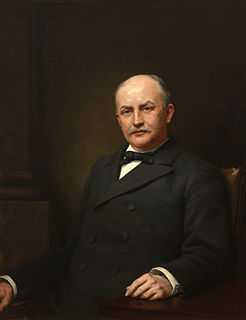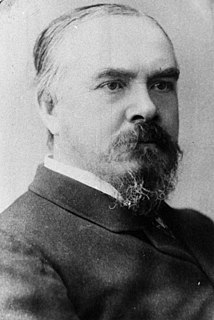Related Research Articles

The Picture of Dorian Gray is a Gothic and philosophical novel by Oscar Wilde, first published complete in the July 1890 issue of Lippincott's Monthly Magazine. Fearing the story was indecent, prior to publication the magazine's editor deleted roughly five hundred words without Wilde's knowledge. Despite that censorship, The Picture of Dorian Gray offended the moral sensibilities of British book reviewers, some of whom said that Oscar Wilde merited prosecution for violating the laws guarding public morality. In response, Wilde aggressively defended his novel and art in correspondence with the British press, although he personally made excisions of some of the most controversial material when revising and lengthening the story for book publication the following year.

Vincent Willem van Gogh was a Dutch post-impressionist painter who posthumously became one of the most famous and influential figures in the history of Western art. In a decade, he created about 2,100 artworks, including around 860 oil paintings, most of which date from the last two years of his life. They include landscapes, still lifes, portraits and self-portraits, and are characterised by bold colours and dramatic, impulsive and expressive brushwork that contributed to the foundations of modern art. He was not commercially successful, and his suicide at 37 came after years of mental illness, depression and poverty.

The Wounded Knee Massacre, also known as the Battle of Wounded Knee, was a domestic massacre of nearly three hundred Lakota people by soldiers of the United States Army. It occurred on December 29, 1890, near Wounded Knee Creek on the Lakota Pine Ridge Indian Reservation in the U.S. state of South Dakota, following a botched attempt to disarm the Lakota camp. The previous day, a detachment of the U.S. 7th Cavalry Regiment commanded by Major Samuel M. Whitside intercepted Spotted Elk's band of Miniconjou Lakota and 38 Hunkpapa Lakota near Porcupine Butte and escorted them 5 miles (8.0 km) westward to Wounded Knee Creek, where they made camp. The remainder of the 7th Cavalry Regiment, led by Colonel James W. Forsyth, arrived and surrounded the encampment. The regiment was supported by a battery of four Hotchkiss mountain guns.
The American Association (AA) was a professional baseball league that existed for 10 seasons from 1882 to 1891. Together with the National League (NL), founded in 1876, the AA participated in an early version of the World Series seven times versus the champion of the NL in an interleague championship playoff tournament. At the end of its run, several AA franchises joined the NL. After 1891, the NL existed alone, with each season's champions being awarded the Temple Cup (1894–1897).

Elections to the United States House of Representatives were held in 1892 for members of the 53rd Congress, taking place at the same time as the election of Grover Cleveland as President for the second, non-continuous, time, defeating incumbent Benjamin Harrison.

Elections to the United States House of Representatives were held in 1890 for members of the 52nd Congress, taking place in the middle of President Benjamin Harrison's term.

The New Zealand general election of 1890 was one of New Zealand's most significant. It marked the beginning of party politics in New Zealand with the formation of the Liberal Government, which was to enact major welfare, labour and electoral reforms, including giving the vote to women.

The United States Census of 1890 was taken beginning June 2, 1890. It determined the resident population of the United States to be 62,979,766—an increase of 25.5 percent over the 50,189,209 persons enumerated during the 1880 census. The data was tabulated by machine for the first time. The data reported that the distribution of the population had resulted in the disappearance of the American frontier. Most of the 1890 census materials were destroyed in a 1921 fire and fragments of the US census population schedule exist only for the states of Alabama, Georgia, Illinois, Minnesota, New Jersey, New York, North Carolina, Ohio, South Dakota, and Texas, and the District of Columbia.

The 1890 New York state election was held on November 4, 1890, to elect a judge of the New York Court of Appeals, as well as all members of the New York State Assembly.

The United States Senate elections of 1890 and 1891 were elections in which the Republican Party lost four seats in the United States Senate, though still retaining a slim majority. That majority was increased, however, upon the admission of two more states with Republican senators.
The 1890 All-Ireland Senior Football Championship was the fourth staging of Ireland's premier Gaelic football knock-out competition. Cork were the champions.

Xyloryctidae is a family of moths contained within the superfamily Gelechioidea described by Edward Meyrick in 1890. Most genera are found in the Indo-Australian region. While many of these moths are tiny, some members of the family grow to a wingspan of up to 66 mm, making them giants among the micromoths.

In 1889–1890, a pandemic, sometimes known as the "Asiatic flu" or "Russian flu", killed about 1 million people worldwide, out of a population of about 1.5 billion. It was the last great pandemic of the 19th century, and is among the deadliest pandemics in history. The most reported effects of the pandemic took place from October 1889 to December 1890, with recurrences in March to June 1891, November 1891 to June 1892, winter of 1893–1894, and early 1895.

The Forth Bridge is a cantilever railway bridge across the Firth of Forth in the east of Scotland, 9 miles west of central Edinburgh. Completed in 1890, it is considered as a symbol of Scotland, and is a UNESCO World Heritage Site. It was designed by the English engineers Sir John Fowler and Sir Benjamin Baker. It is sometimes referred to as the Forth Rail Bridge, although this has never been its official name.

The 1890 United States elections occurred in the middle of Republican President Benjamin Harrison's term. Members of the 52nd United States Congress were chosen in this election. The Republicans suffered major losses due to the Panic of 1890 and the unpopularity of the McKinley Tariff. The Populist Party also emerged as an important third party.
This is a list of members of the New South Wales Legislative Council from 1889 to 1891. At this time the Council was composed of individuals appointed for life by the Governor on the advice of the Premier. This list includes members between the beginning of the 1889 colonial election on 1 February 1889 and the beginning of the 1891 colonial election on 17 June 1891.

The 1890 California gubernatorial election was held on November 4, 1890 to elect the governor of California.

The 1890 Massachusetts gubernatorial election was held on November 4, 1890. Incumbent Republican Governor John Q. A. Brackett ran for re-election to a second term in office, but was defeated by Democratic Mayor of Cambridge William Russell.